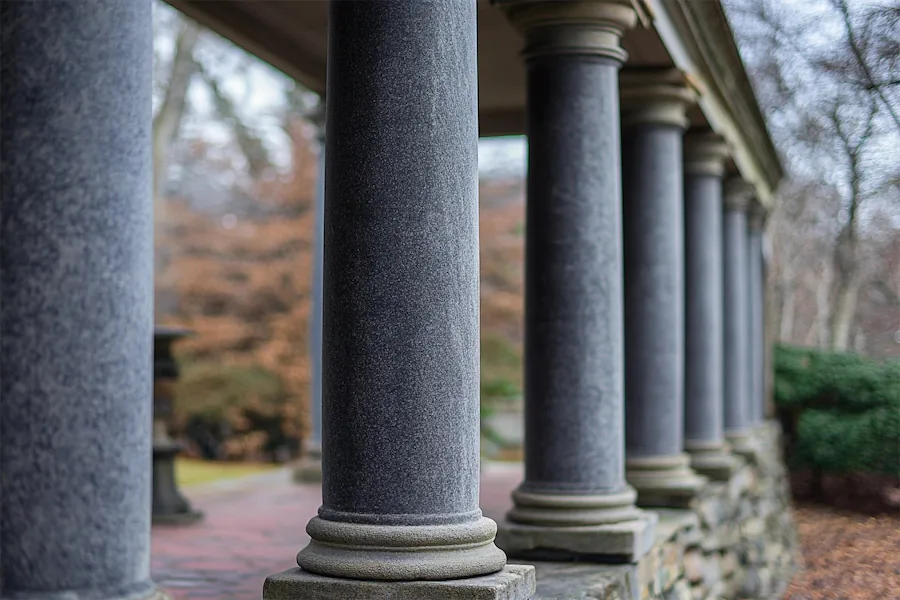New England architecture is renowned for its rich history and diverse styles, with columns serving as prominent features that reflect the region’s cultural and historical evolution.
Introduction to New England Columns
In New England, architectural columns are integral elements that not only provide structural support but also convey stylistic expressions unique to various periods. From the simplicity of early Colonial designs to the grandeur of Greek Revival structures, columns have played a significant role in defining the aesthetic of New England architecture.
History and Origins of New England Columns
The use of columns in New England architecture has evolved over centuries:
- Colonial Period (17th Century): Early settlers constructed simple, functional homes with minimal ornamentation. Columns, if present, were plain and unadorned, reflecting the settlers’ focus on practicality.
- Georgian Era (1700-1780): As prosperity grew, so did the desire for more refined architectural elements. Georgian homes featured symmetrical facades with paneled doors flanked by flattened columns, known as pilasters, supporting decorative crowns.
- Federal Style (1780-1820): Influenced by Roman architecture, the Federal style introduced more elaborate columns, often accompanying grand entrances with fanlights and sidelights. These columns were typically slender and emphasized verticality.
- Greek Revival (1830-1850): This period marked a fascination with ancient Greek democracy, leading to the incorporation of prominent columns modeled after classical Greek orders—Doric, Ionic, and Corinthian. Buildings from this era often resembled Greek temples, with tall columns supporting pediments.
Key Features of New England Columns
New England columns exhibit distinct characteristics depending on the architectural style:
- Material: Traditionally, wood was the primary material, painted to protect against the harsh New England climate. In more monumental structures, stone and brick were also utilized.
- Design:
- Doric: Simple and sturdy, with plain capitals and no base.
- Ionic: Identified by the scroll-like volutes on the capitals.
- Corinthian: Elaborate capitals decorated with acanthus leaves.
- Functionality: Beyond their structural role, columns served as symbols of cultural values, such as democracy and order, especially during the Greek Revival period.
Applications of New England Columns
Columns in New England architecture are utilized in various ways:
- Residential Buildings: Enhancing the grandeur of entrances and porches, providing a sense of formality and symmetry.
- Public Structures: Imparting authority and stability to courthouses, town halls, and educational institutions. For example, the Boston Custom House, constructed in the mid-19th century, features 36 fluted Doric columns, each carved from a single piece of granite.
- Religious Edifices: Creating imposing facades for churches, reflecting the community’s spiritual aspirations.
Considerations When Choosing New England Columns
When selecting or designing columns in the New England architectural context, several factors are considered:
- Historical Accuracy: Ensuring that the column style aligns with the building’s overall architectural period and style.
- Material Durability: Choosing materials that can withstand the region’s variable weather conditions while maintaining aesthetic appeal.
- Proportionality: Maintaining appropriate column proportions to achieve visual harmony with the rest of the structure.
Conclusion
Columns are a defining feature of New England architecture, encapsulating the region’s historical progression and aesthetic values. From the unadorned supports of Colonial homes to the majestic pillars of Greek Revival buildings, these elements continue to symbolize the architectural heritage of New England.
